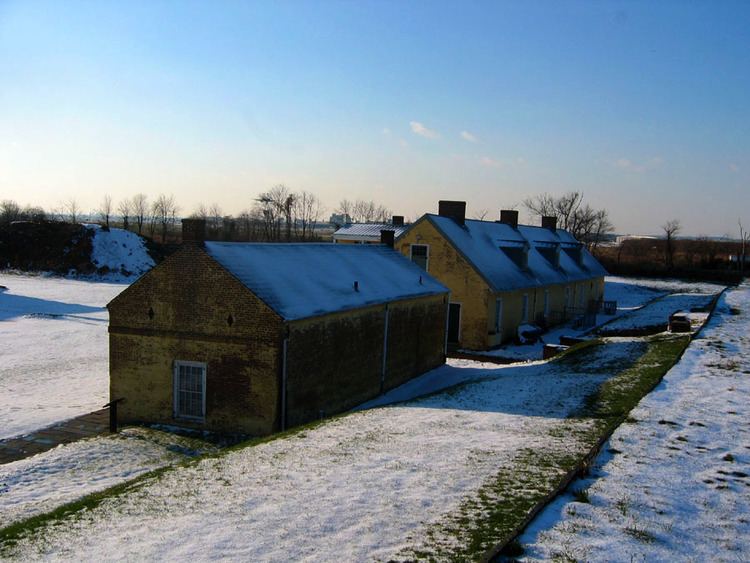 | ||
A National Historic Landmark (NHL) is a building, district, object, site, or structure that is officially recognized by the United States government for its outstanding historical significance. Of over 85,000 places listed on the country's National Register of Historic Places, only some 2,500 are recognized as National Historic Landmarks.
Contents
A National Historic Landmark District may include contributing properties that are buildings, structures, sites or objects, and it may include non-contributing properties. Contributing properties may or may not also be separately listed.
Creation of the National Historic Landmark program
Prior to 1935, efforts to preserve cultural heritage of national importance were made by piecemeal efforts of the United States Congress. In 1935, Congress passed the Historic Sites Act, which authorized the Interior Secretary authority to formally record and organize historic properties, and to designate properties as having "national historical significance", and gave the National Park Service authority to administer historically significant federally owned properties. Over the following decades, surveys such as the Historic American Buildings Survey amassed information about culturally and architecturally significant properties in a program known as the Historic Sites Survey. Most of the designations made under this legislation became National Historic Sites, although the very first designation, made December 20, 1935, was for the Jefferson National Expansion Memorial in St. Louis, Missouri. The first National Historic Site designation was made for the Salem Maritime National Historic Site on March 17, 1938.
In 1960, the National Park Service took on the administration of the survey data gathered under this legislation, and the National Historic Landmark program began to take more formal shape. When the National Register of Historic Places was established in 1966, the National Historic Landmark program was encompassed within it, and rules and procedures for inclusion and designation were formalized. Because listings (either on the National Register, or as an NHL) often triggered local preservation laws, legislation in 1980 amended the listing procedures to require owner agreement to the designations.
On October 9, 1960, 92 properties were announced as designated NHLs by Secretary of the Interior Fred A. Seaton. The first of these was a political nomination: the Sergeant Floyd Monument in Sioux City, Iowa was officially designated on June 30 of that year, but for various reasons, the public announcement of the first several NHLs was delayed.
Criteria
NHLs are designated by the United States Secretary of the Interior because they are:
Current NHLs
More than 2,500 NHLs have been designated. Most, but not all, are in the United States.
There are NHLs in all 50 states and the District of Columbia. Three states (Pennsylvania, Massachusetts, and New York) account for nearly 25 percent of the nation's NHLs. Three cities within these states (Boston, Philadelphia, and New York City) all separately have more NHLs than 40 of the 50 states. In fact, New York City alone has more NHLs than all but five states: Virginia, California, Pennsylvania, Massachusetts, and New York (the latter of which has the most NHLs of all 50 states). There are 74 NHLs in the District of Columbia.
Some NHLs are in U.S. commonwealths and territories, associated states, and foreign states. There are 15 in Puerto Rico, the Virgin Islands, and other U.S. commonwealths and territories; 5 in U.S.-associated states such as Micronesia; and 1 in Morocco.
Over 100 ships or shipwrecks have been designated as NHLs.
Other
About half of the National Historic Landmarks are privately owned. The National Historic Landmarks Program relies on suggestions for new designations from the National Park Service, which also assists in maintaining the landmarks. A friends' group of owners and managers, the National Historic Landmark Stewards Association, works to preserve, protect and promote National Historic Landmarks.
If not already listed on the National Register of Historic Places, an NHL is automatically added to the Register upon designation. About three percent of Register listings are NHLs.
